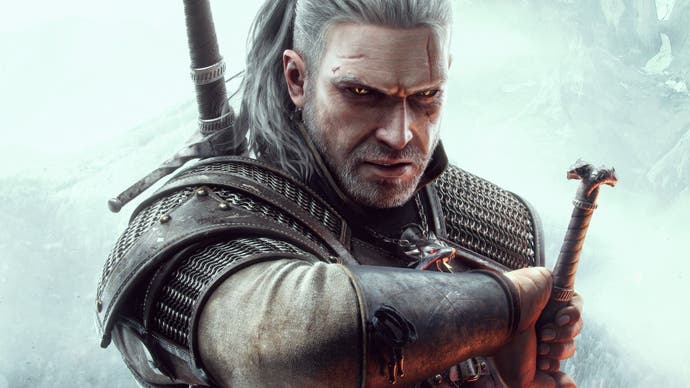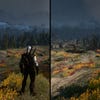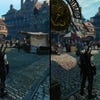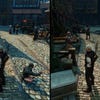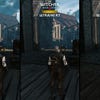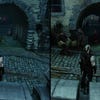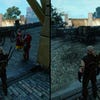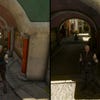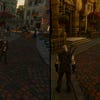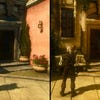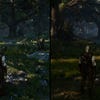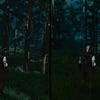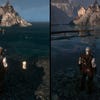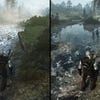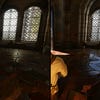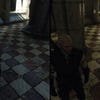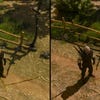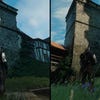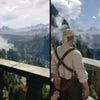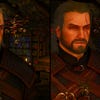The Witcher 3's next-gen upgrade is beautiful on PC - but performance is not good enough
And the hotfix update doesn't address the fundamental problems.
The Witcher 3 is over seven years old now - and we were surprised and delighted to see CD Projekt RED return to the game, modernising it with a range of visual upgrades. Our take on the console versions is coming shortly, but we're kicking off with a look at the PC build, which delivers the widest range of enhancements compared to the original release. Cutting to the chase, the ray tracing enhancements are brilliant and absolutely transformative - but there are clear issues with performance that need to be addressed.
The majority of our performance tests were carried out with the day one release code, but we delayed the content until we retested with the hotfix update - and we're sorry to say that whatever improvements CDPR has made do not address any of our major criticisms.
Focusing on the positives first, the developer's support for ray tracing features is highly impressive. There's the inclusion of RTXGI, which is a probe-based RT global illumination solution. On top of that, there's RT ambient occlusion, better grounding objects into the environment. Finally, RT reflections and shadows are also added to the mix, providing a comprehensive range of visual upgrades.
There are a range of non-RT-based improvements too. Screen-space reflections for bodies of water are added if you're not using the RT reflections, plus there's a bunch of 'ultra plus' quality options too. Of these, there are two that really stand out: foliage density and distance dramatically increase distant detail, to the point where the existing ultra setting looks almost funny by comparison. Likewise, the density of the various tufts of foliage has increased as well, so these elements stretch out further into the distance and are more dense when doing so. Another improvement is the NPC density at ultra plus settings, especially evident in large-scale cities like Novigrad.
Beyond the ultra plus settings, there are further upgrades baked into the new update. I cannot speak for all cutscenes, but I really liked seeing that the low-quality video from the game's intro has been replaced and appears to run in real-time now - looking so much better for it. Beyond that nicety, the next-gen upgrade has a number of new assets and higher res textures, while elements that were previously textures - such as the cobbles of Novigrad - are now full 3D geometry. NPCs are also more highly detailed, while hero characters like Geralt get detailed shadows casting from them outside of cutscenes. Additionally, all torches within the game world now cast shadows too.
The last universal upgrade is that the mesh LOD setting - which is not adjustable in-game - is much higher in the new release. This isn't down to ultra plus settings as it's actually baked into all settings presets. Generally speaking, the increase in level of detail is one of the most readily visible upgrades to the game outside of the RT improvements.
As to why ray tracing is so transformative in The Witcher 3, it's worth explaining how the 2015 version works. In the original game, nearly all bounce lighting for reflective and dull surfaces is handled by cubemaps placed around the world by artists very sparsely, resulting in a flat, blue-ish monotone look to lighting. RTXIGI and RTAO dramatically increases realism and as you'll see in the video and screenshots on this page, it's a night and day improvement, adding in a lot of light bounce and colour, increasing realism tremendously.
Other added RT effects are great, but more situational. Ray-traced reflections, for example, greatly aid the rendering of water surfaces, again delivering a massive improvement over the non-RT solution. Water surfaces now look a lot better whether they be seaside bays, tiny puddles on the ground, or even the small fountains found across the world. I have only found one exception to this and that's the streams in Skellige's heartland, where the RT reflections are a bit broken, looking static on moving water. RT reflections also apply to any surface that's smooth and reflective enough, like tiled floors, armour and weapons.
Ray-traced shadows do their usual job of adding distance and varying degrees of sharpness based on their distance away from the shadow-casting source, while also adding screen-space shadows for tufts of grass, giving them a shaded and shadowed look which is otherwise completely missing in the original game. I think this is a very significant difference as I always thought grass in the old game looked weirdly unshaded and two-dimensional as a result. There are some bugs though - I noticed RT shadows appear and disappear at times for reasons I can't explain, so I'd hope to see this fixed. RT shadows also appear to have interactivity issues with Nvidia Hairworks, which I'd also like to see addressed.
With the new lighting and improved draw distances, The Witcher 3 looks like a much improved game visually. It easily sucks you back into its environments and you can find yourself just wandering around the game world enjoying the look and feeling of it all. It truly is a treat to go back into the game world and relive it in a new light, literally. The extent to which you will enjoy it, however, depends on your hardware. This is an immensely challenging game to run, especially with RT active - and even without, it's clear that the DirectX 12 version has troubling performance limitations.
To put this into perspective, The Witcher 3 launched as a DX11 title. The next-gen upgrade ships with both DX11 and DX12 modes, the latter of which is required to use RT features, DLSS and FSR2. Although CDPR seems to claim otherwise, the DX11 version looks identical to the DX12 version with no RT enabled, so I think it's fine to compare the two on equivalent settings. In a busy Novigrad scene, DX11 offers a 45 percent improvement to performance compared to DX12 - and remember that's without RT enabled. In turn, DX12 without RT enabled has a 54 percent performance advantage over DX12 with RT on. These performance differentials are all down to the CPU, it should be stressed, where we noted big under-utilisation of the GPU.
The stark reality is that the frame-rates we are seeing here imply that the game at max settings is heavier than Microsoft Flight Simulator or Spider-Man Remastered, two of the most CPU-heavy titles of recent times. Yes, the CPU burden reduces significantly outside of built-up areas in the countryside, but the point is that depressed performance with a 12900K paired with ultra-fast 6400MHz DDR5 means unacceptably low output on a mainstream processor like a Ryzen 5 3600. There are any number of reasons why performance may be problematic, but the most significant is DX12 and a puzzling under-utilisation of the processor, where it seems that one or two threads are more fully occupied, while any others aren't touched to anything like the same degree.
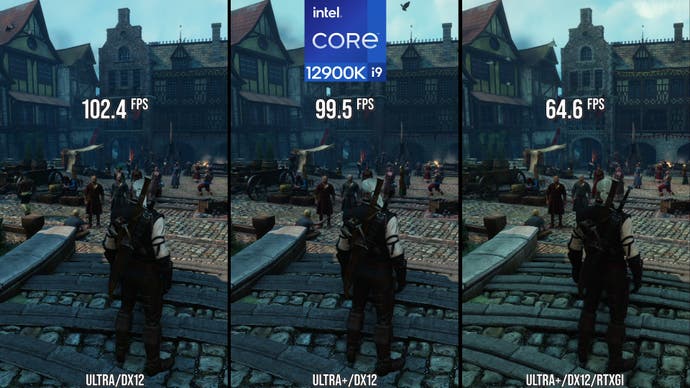

The only way to power past the CPU limitation is via Nvidia DLSS 3 frame generation. As odd as it sounds, the CPU performance limitation is side-stepped almost entirely thanks to frame generation, making it a killer feature in The Witcher 3, assuming you have a decent CPU at the core of your system to begin with. DLSS 3 keeps the frame-rate high with the frame-times less erratic on average - and there's barely any latency penalty.
There are other issues with the game that I should highlight too. Shader compilation stutter is present in the game, which I found highly disappointing, while I also saw a camera stutter effect on panning motion. In summary, there are many, many technical issues that CD Projekt RED needs to address with the PC version of The Witcher 3's next-gen upgrade.
Ultimately, I'm conflicted about this new release. I love the upgrades but there are plenty of disappointments. The game has great visuals and the world looks incredible now, but the performance penalties for using the new features are immense. The CPU hit in accessing the DX12 path is unacceptable and desperately needs addressing. And to reiterate, the problems are still there with the recent hotfix patch, suggesting a more fundamental approach is required to get the game into shape.
